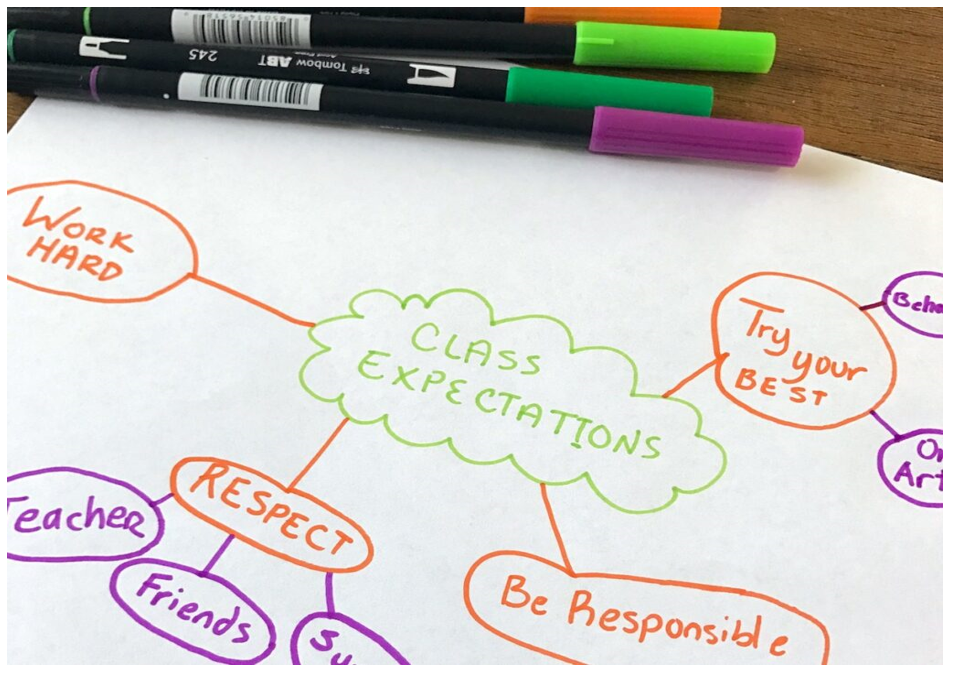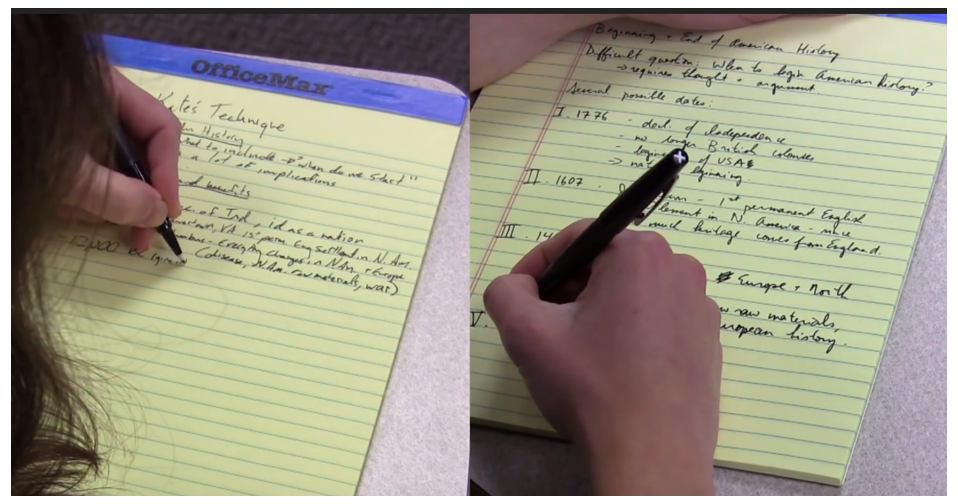Anyone who is just beginning their teaching career often casts a longing glance at the long-developed, rich pool of teaching materials and exam tasks from their established colleagues.
But even among the envied there are some who are not yet completely satisfied with their system. For anyone who belongs to one of these groups or who has the feeling that the conception of their class work requires an extremely high level of correction work, we have summarized a few tips here.
The goal is clear; the students’ performance level should be determined through appropriate and fair tasks in class work. Ideally, your assessment will be transparent and constructive.
The path to this will be much less difficult if you prepare the work well and think it through well in advance with regard to the correction, distribution of points and the horizon of expectations.
Table of Contents
Create class work
Tasks:
Good tasks represent and weight the learning content and objectives developed in class.
The tasks should reflect different levels of requirements (reproducing knowledge, applying it and providing transfer services by explaining, describing, making hypotheses, interpreting…).
You can use a mix of simpler questions and more demanding questions to determine the students’ performance level.
Especially if your own range of exam tasks is not yet very large, it is not a mistake to put suitable tasks aside when planning and during the teaching unit. At the same time, you can practice “identical” questions with your students.
The advantage: The good feeling of having already done something, saving time later and avoiding stressful situations when you realize that you have already “used up” the best questions in class.
Tip:
Of course, old classwork is not thrown away! They are the source of material for future work. The key word is “vary”!
Students will quickly find out which teachers tend to take over exams completely. You can avoid this risk with the help of small reformulations and tasks from various class tests.
Task forms:
You have the choice between closed, semi-open and open questions.
In the closed form, answer options are already given (e.g., multiple choice questions, assignment tasks). This form tests the reproductive performance of your class and can be completed in a short time, but can lead to guesswork. The conception is time-consuming, but in turn saves correction time.
Half-open tasks must be answered with a short sentence, a word or a number (fill-in-the-blank texts, supplementary tasks). They are also easy to correct and the design effort is in the middle range.
For open-ended tasks, you expect students to provide comprehensive, independently formulated solutions (essays, interpretations, justifications). Students need the most time to complete this type of task. You yourself have little work to do when creating and a lot of work when correcting, as the students are supposed to formulate individually and creatively. However, in some cases students may cover these aspects in private tutoring, such as CASPer tutoring. The answers are therefore difficult to compare and an assessment that is as objective as possible takes time.
Mix:
A mixture of task forms suits the students and you. It’s best to mix up the level of difficulty and time required. The most difficult task shouldn’t be at the very beginning (you don’t want to cause panic).
Time:
The rule here is that it is better to add ten minutes of buffer too much than two minutes too little.
It is your responsibility to ensure that the class can write down their performance on paper without having to worry about time. If the students panic that there is not enough time, their nervousness increases and their concentration decreases. In addition, you will then have to deal with (even more) difficult-to-read work that is full of errors.
Formalities:
If students need to write directly on the assignment sheet, be sure to include fields for their name, date, class assignment number, your name, and the subject. A motivating picture or a funny saying doesn’t hurt either.
Clarity:
You can prevent many questions and misunderstandings by clearly designing and structuring your class work. Be as simple as possible, not too convoluted or ambiguous. The students should be able to see at a glance how many tasks they have to complete or which information is particularly important (underline it, write it in “bold”, put it in a heading). With signal words
introduced (describe, interpret, draw, discuss, label, fill in…) the students recognize more quickly what is expected. The longer a task is and the more space it takes up on the worksheet, the more important, difficult and time-consuming it appears to the children.
Proofreader:
When doing your first class work, it’s a good idea to get the opinion of someone you know (ideally, he or she is a stranger to the subject, not in school and doesn’t have to expect any reprisals from you if you make critical statements…). Outsiders can often see much better whether you have not formulated it clearly and concisely or whether something is misleading or confusing.
Before the exam
Meeting:
When making an appointment, think about the class, but also about yourself!
Announce the dates to the class in good time. A point in time about three, but at least two weeks beforehand is good (even if you suspect that most people only look at the books two days beforehand…). To be on the safe side, you should remind your students about the upcoming event a week before the exam.
Take a look at the exam calendar. Students should not have to write too many papers per week. Two are ok, but in exceptional cases three are possible. However, the pressure on the students is high, especially when it comes to learning-intensive subjects, and the grumbling of the class in such cases is not entirely unfounded.
But also take a look at your calendar: If the exam dates are concentrated at certain times, you will also have a lot of correction work to do!
Announcement of the material relevant to the exam:
Reserve time for announcing and discussing topics relevant to the exam. Of course, only what has been covered extensively in class is tested. This makes it clear to the students what is important and offers the opportunity to clarify any questions that remain unanswered or that have arisen.
Preparation for carrying out the class work
Clear announcements:
What happens if you catch a student copying or cheating? Which aids (calculators, collection of formulas, etc.) are permitted? How do you handle information on concept paper?
It’s never a bad idea to read the questions carefully – even if it’s a given, exam nervousness can even cause students to overlook or misunderstand important information in a task. Everything you clarify in advance will save you discussions afterwards.
Formulate work instructions and expectations:
You can add a lot of little things directly into the exam: Are multiple answers possible for multiple choice questions? Are keywords enough or do you expect well-formulated sentences? What to do if the wrong thing was marked?
However, if you are afraid that your protégés will not immediately grasp the special features or certain expectations of a task, point this out to the class in advance (preferably before handing it out, otherwise half of them will not notice and you will answer the question five times). . Sometimes it makes sense to briefly go through the entire work together. The students then know what to expect and can better assess which tasks will be time-consuming.
Preparation for correction
Horizon of expectations:
Yes, developing model solutions takes time and effort – but you save both on corrections and can better justify your awarding of points to the students (and yourself). As you solve the tasks, some discrepancies and misleading wordings become clear to you and can be remedied. You should only need a fraction of the time available to the students – otherwise something has gone wrong.
Distribution of points:
If you indicate the points to be achieved for each task on the class work, the students have the opportunity to see which ones they should put more effort into. On the other hand, this means that you are determined – even if, for example, you once underestimated the level of difficulty of a task.
Until high school, it is better to distribute the points over several shorter tasks on different topics and problems.
The most points are awarded for complex and difficult tasks and are then graded. The following generally applies to corrections: the more points, the more correction effort. If you have defined four important pieces of information in your expectations, it makes little sense to set 16 points and then rack your brains as to whether one answer was slightly better or slightly worse than the other. In this case, eight points are completely sufficient for gradation.
In some subjects it makes sense to evaluate differently. Then let the students know that points are not only to be scored for correct content, but also for, for example, stringent argumentation, spelling or style.
In order to remain transparent, it is better to state the points separately (e.g. content: 2 points, argument: 1 point). This allows students to see that they may have learned the facts well, but the reasoning is not coherent or the spelling is a disaster. You will also be able to assign the points more reliably and therefore more quickly when making corrections.











